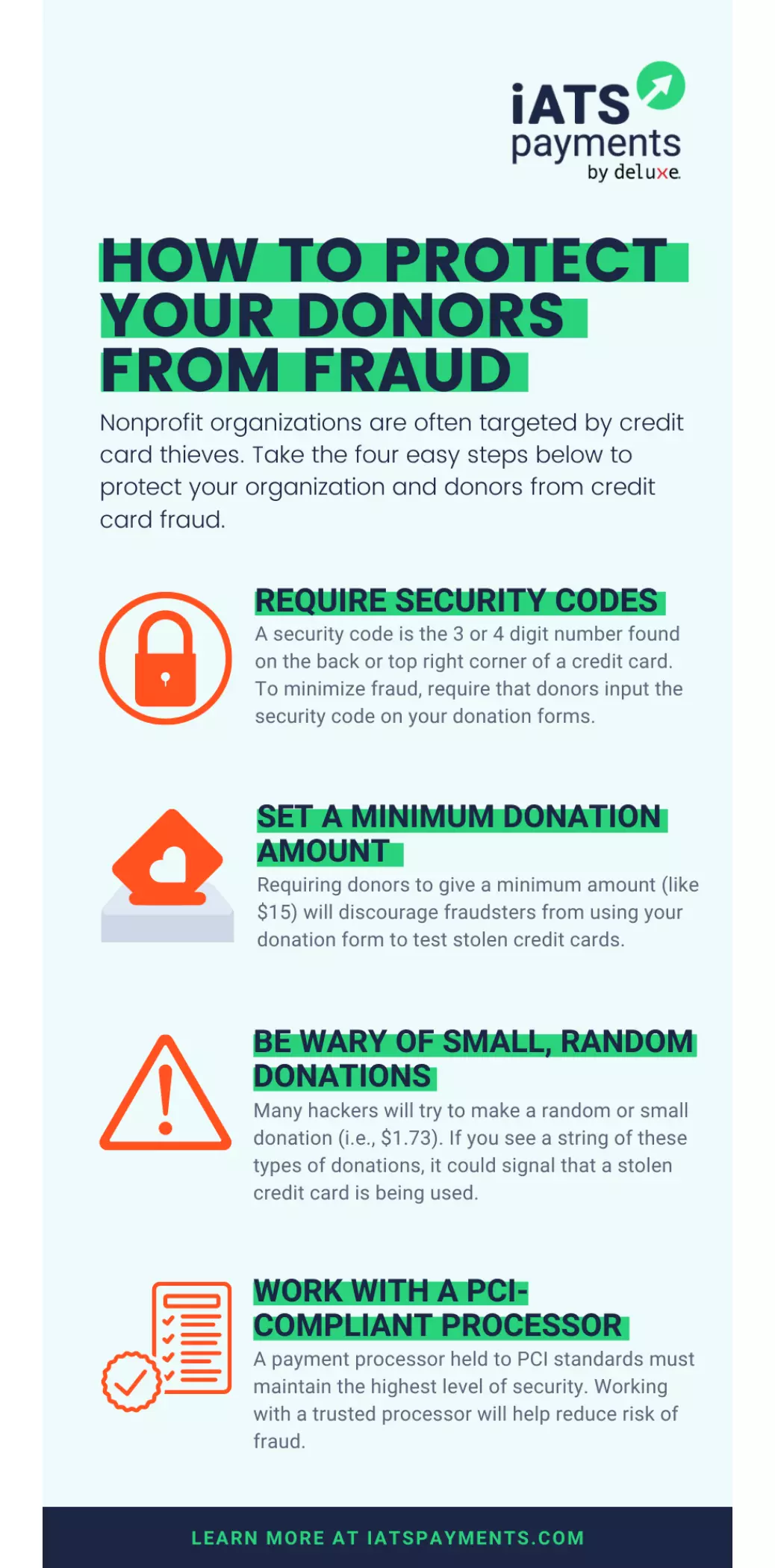Online credit card fraud has always been a concern for retailers and nonprofits, but the move to chipped cards caused online credit card fraud to become more common.
Previously, credit card thieves could easily steal credit card data during in-person transactions. Chipped cards made this more difficult. Therefore, most fraudulent activity has moved online, a much easier alternative to in-person fraud.
How does fraud occur?
When a credit card account is hacked, the fraudster can use stolen credit card information for large purchases using the victim’s identity.
However, hackers must test that the card will actually work.
Since nonprofit donation pages are less complicated and more static than online retailer shopping carts, many of these fraudsters test stolen credit cards by making small, often random donations (for example, $2.17).
This infographic illustrates four best practices for protecting your donors from fraud.



 Support Center
Support Center